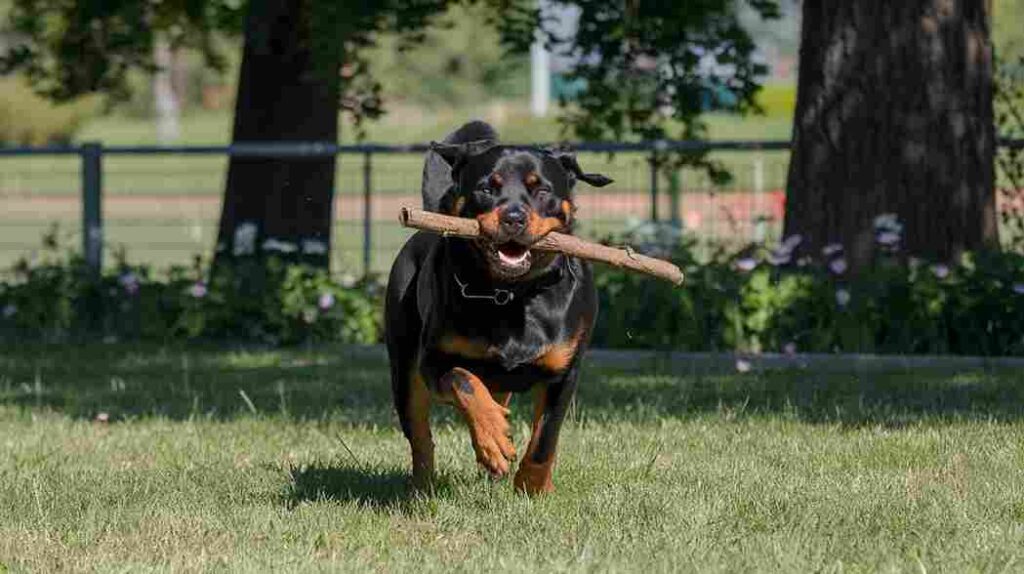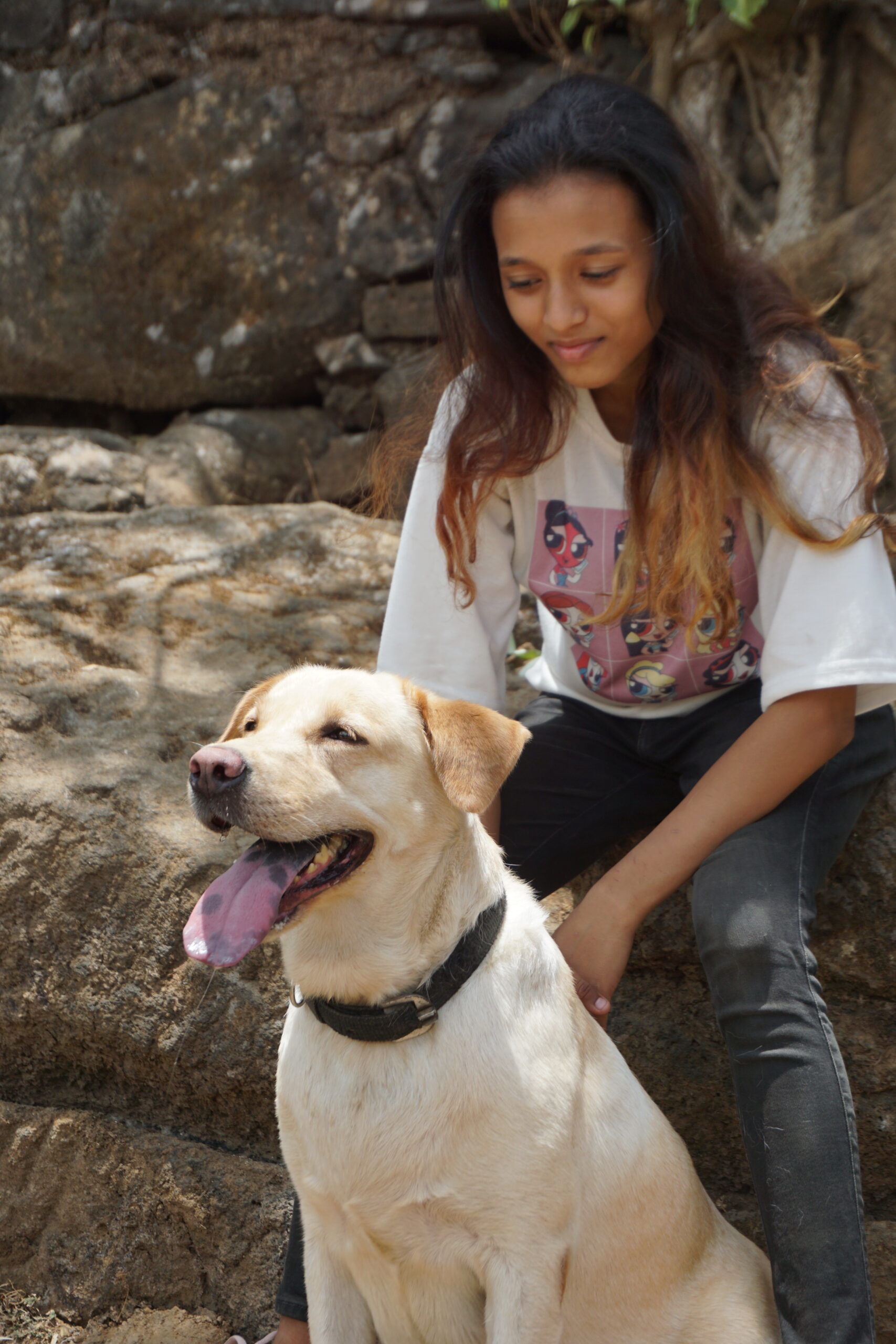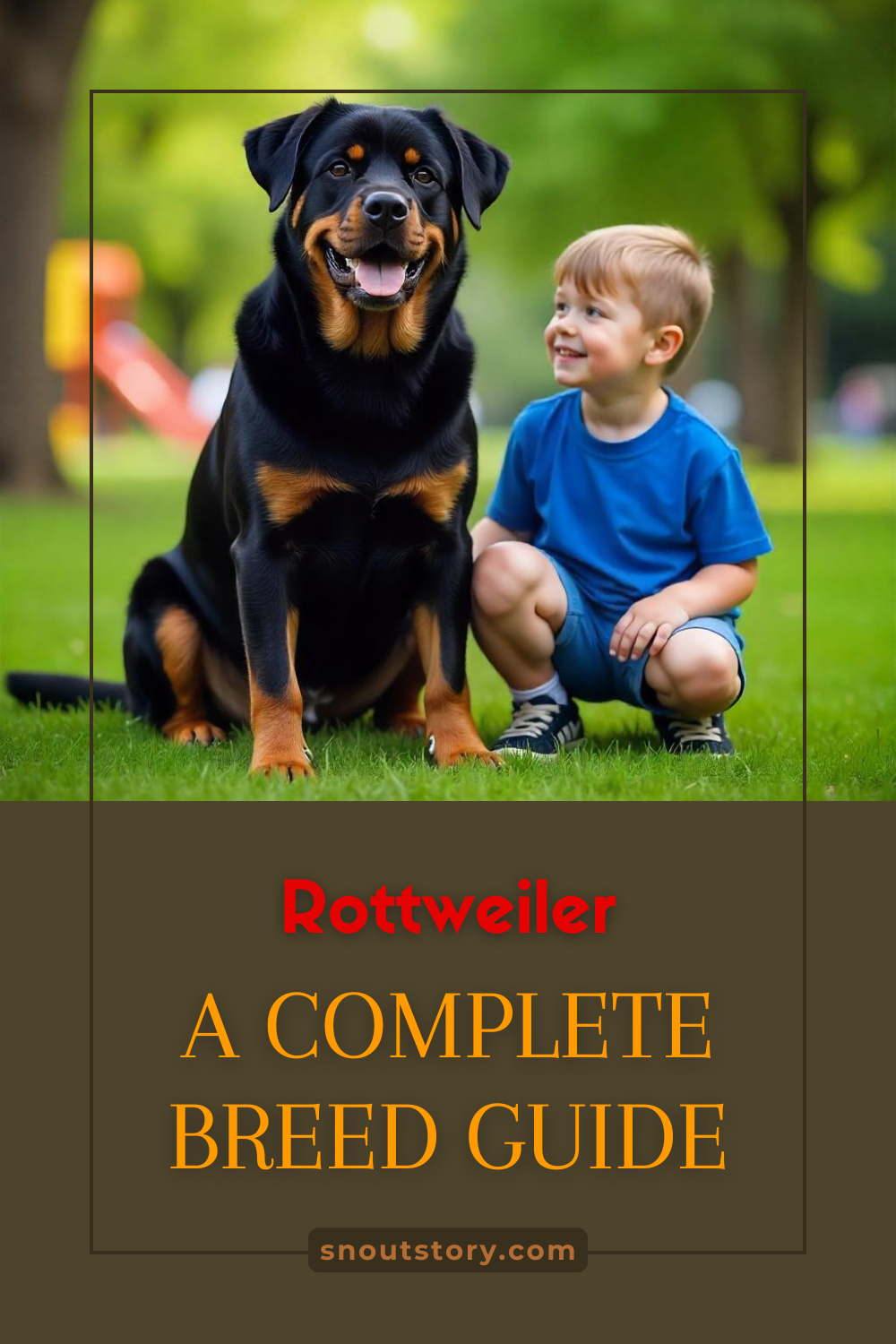Disclaimer
“This Blog is completely reader supported, for any purchase you make from affiliate links on this blog we earn a small commissions with no extra cost to you, which I use to feed my cute puppies 🥺”
Strong, loyal, and incredibly intelligent, the Rottweiler is a breed that commands respect while offering unwavering devotion to its family. Known for their protective instincts and robust physique, Rottweilers are more than just guard dogs—they’re affectionate companions with a playful side that often surprises first-time owners.
Whether you’re considering adding a Rottweiler to your home or looking to deepen your understanding of this remarkable breed, it’s essential to know what makes them thrive. From their rich history as working dogs to their specific training, nutrition, and health needs, this guide covers everything you need to ensure your Rottweiler lives a happy, balanced life.
The Origins and History of the Rottweiler
The Rottweiler’s history is rooted in ancient Rome, where these strong, resilient dogs were used to herd cattle and guard supplies for Roman legions during long military expeditions.
As the Romans advanced into what is now Germany, the breed adapted to new roles in the town of Rottweil, a thriving hub for cattle trade. Here, Rottweilers became indispensable to butchers, earning the nickname “Rottweiler Metzgerhund” or butcher’s dog, for their ability to drive livestock, pull heavy carts, and protect valuable goods.
Their natural guarding instincts and work ethic were shaped by these demanding tasks, which is why today’s Rottweilers excel in roles like police work, search and rescue, and even therapy. Understanding their working heritage helps you provide the right balance of mental stimulation and physical activity to keep your Rottweiler happy and well-behaved.
Distinctive Physical Characteristics of Rottweilers
| Gender | Height (at the shoulder) | Weight Range |
|---|---|---|
| Male | 24 – 27 inches (61 – 69 cm) | 95 – 135 lbs (43 – 61 kg) |
| Female | 22 – 25 inches (56 – 63 cm) | 80 – 100 lbs (36 – 45 kg) |
A Rottweiler’s physical traits are unmistakable, with a powerful, muscular build that reflects its working dog heritage. You’ll notice their broad chest, strong neck, and a solid, compact frame designed for endurance and strength. Their short, dense double coat is typically black with clearly defined rust or mahogany markings, adding to their striking appearance.
The breed standard highlights a broad head with a moderately arched forehead, well-developed jaws, and almond-shaped, dark brown eyes that give an intelligent, confident expression. Their ears are medium-sized, triangular, and set high, lying flat against the head to enhance their alert look.
The only recognized color for this Breed is Black & Tan, Rottweilers should be black with clearly defined rust-colored markings. The rust markings typically appear on the cheeks, over the eyes, on the muzzle, chest, legs, and beneath the tail. These markings should be a deep, rich tan, not too light or pale, and not extending too far down the legs or under the body.
A well-balanced Rottweiler moves with purpose—smooth, confident, and powerful strides that showcase their agility. If you’re considering one for shows or breeding, paying attention to these details ensures your Rottweiler aligns with recognized standards while maintaining its natural, robust charm.
Rottweiler Temperament and Behavioral Traits
The Rottweiler is known for its confident and protective nature, making it an excellent guard dog and family companion. While these dogs are often perceived as intimidating due to their imposing stature, they are also incredibly loyal and affectionate, particularly with their families.
You’ll notice that they are naturally protective of their loved ones, which makes them great watchdogs. However, it’s important to note that their guarding instincts need proper training to ensure they’re not overly territorial or aggressive with strangers. Their intelligence makes them highly trainable, but they also require consistent leadership and socialization from an early age to prevent dominance.
A well-trained Rottweiler is calm, confident, and even-tempered, ready to engage with you as both a protector and a loving pet. If you’re dedicated to providing them with proper structure and socialization, they’ll be an obedient and trustworthy companion.
Effective Training Methods for Rottweilers
Training a Rottweiler requires a balance of consistency, patience, and positive reinforcement. This breed thrives on structure and leadership, so it’s important to establish yourself as the confident pack leader early on. Start with basic obedience commands like “sit,” “stay,” and “come” using treats and praise to motivate your dog.
Since Rottweilers are highly intelligent, they can quickly pick up new skills, but they also tend to test boundaries, so being firm and consistent with rules is key. Socialization should be prioritized from a young age, exposing your Rottweiler to various people, animals, and environments to prevent any territorial or aggressive tendencies.
Incorporating short, engaging training sessions will keep your dog focused without overwhelming them, and rewarding positive behavior will reinforce their good habits. With the right approach, your Rottweiler will not only become well-behaved but also a trusted companion who respects you as the leader of the pack.
Nutritional Guidelines for a Healthy Rottweiler
Feeding your Rottweiler a balanced, nutrient-rich diet is essential to support their muscular build, high energy levels, and overall health. Prioritize high-quality dog food with real animal proteins like chicken, beef, or lamb listed as the first ingredient to maintain strong muscles.
Healthy fats, particularly omega-3 and omega-6 fatty acids, are crucial for a shiny coat and joint health, while complex carbohydrates like sweet potatoes or brown rice provide sustained energy without unnecessary fillers. Portion control is key to prevent obesity, which can strain their joints—especially since Rottweilers are prone to hip and elbow dysplasia.
Divide meals into two servings per day to aid digestion and reduce the risk of bloat, a serious health issue in large breeds. Don’t forget to supplement with fresh vegetables for fiber, and always keep fresh water accessible. Consulting with your vet to adjust your Rottweiler’s diet based on age, activity level, and health conditions ensures you’re meeting their specific nutritional needs.
Here are two most popular breed specific foods for Rottweiler’s for both puppy and adult’s:
Royal Canin Rottweiler Puppy Breed Specific Dry Dog Food

Royal Canin Rottweiler Adult Breed Specific Dry Dog Food

Common Health Issues and Preventive Care for Rottweilers
Keeping your Rottweiler healthy starts with recognizing the signs of common health issues and taking proactive steps to manage them. Here are some common Health Issues that affect your Rottweilers Health:
- Hip and Elbow Dysplasia:
- Signs: Stiffness, limping, reluctance to exercise.
- Management: Regular vet check-ups, maintaining a healthy weight, providing joint supplements if recommended.
- Heart Conditions (e.g., Aortic Stenosis):
- Signs: Fatigue, fainting, difficulty breathing, coughing.
- Management: Routine cardiac screenings, early diagnosis, prescribed medications from your vet.
- Bloat (Gastric Dilatation-Volvulus):
- Signs: Swollen abdomen, restlessness, unproductive retching, rapid breathing.
- Management: Immediate emergency vet care; preventive measures include feeding smaller meals and avoiding vigorous exercise after eating.
- Skin Allergies and Irritations:
- Signs: Excessive scratching, red or irritated skin, hot spots, hair loss.
- Management: Hypoallergenic diets, regular grooming, medicated shampoos, and consulting your vet for allergy testing if needed.
- Obesity:
- Signs: Weight gain, difficulty breathing, decreased stamina.
- Management: Controlled feeding, regular exercise, portion monitoring, and weight check-ups with your vet.
- Cancer (Common in Older Rottweilers):
- Signs: Lumps, unexplained weight loss, lethargy, loss of appetite.
- Management: Early detection through regular health screenings, prompt veterinary intervention, and potential treatment options like surgery or chemotherapy.
- Hypothyroidism:
- Signs: Lethargy, weight gain without increased food intake, skin issues, hair thinning.
- Management: Routine blood tests, lifelong thyroid hormone replacement therapy as prescribed by your vet.
- Eye Conditions (e.g., Cataracts, Entropion):
- Signs: Cloudy eyes, excessive tearing, squinting, vision issues.
- Management: Regular eye exams, surgical correction if needed, and prompt treatment of infections.
Regular vet visits, a balanced diet, proper exercise, and close observation of behavioral or physical changes can significantly improve your Rottweiler’s quality of life.
Exercise Requirements to Keep Your Rottweiler Fit and Happy

Keeping your Rottweiler in top shape isn’t just about feeding the right diet—it’s about meeting their high exercise demands to support both physical health and mental well-being. This breed thrives on structured activities that challenge their strength and intelligence, so aim for at least 60 to 90 minutes of exercise daily.
A simple walk around the block won’t cut it; mix in brisk walks, jogs, and play sessions like fetch or tug-of-war to keep them engaged. Rottweilers also excel in advanced activities such as agility training, obedience drills, and even tracking exercises, which tap into their working-dog instincts.
Mental stimulation is just as critical—puzzle toys, scent games, and task-oriented exercises can prevent boredom, which often leads to destructive behaviors. Consistency is key, but always tailor the intensity to your dog’s age and health. Overworking a puppy can strain developing joints, while older dogs might need lower-impact activities like swimming.
Grooming and Maintenance Tips for a Healthy Rottweiler Coat
Maintaining your Rottweiler’s sleek, double-layered coat doesn’t require elaborate grooming, but consistency is key to keeping it healthy and shiny. Brushing once or twice a week with a firm bristle brush or rubber grooming mitt helps remove loose hair, reduce shedding, and distribute natural oils that keep the coat glossy.
During seasonal shedding periods in spring and fall, increasing the frequency to a few times a week helps manage the extra hair. Bathing your Rottweiler every 6-8 weeks with a mild, dog-specific shampoo keeps their skin clean without stripping essential oils. Pay attention to the undercoat, ensuring it’s fully rinsed and dried to prevent skin issues.
Regularly check and clean their ears to avoid infections, trim their nails every few weeks to prevent discomfort, and brush their teeth several times a week to maintain good oral hygiene. A healthy coat also reflects a balanced diet rich in omega-3 fatty acids, so consider adding fish oil supplements if recommended by your vet.
Summary
In summary, understanding the Rottweiler’s rich history, distinct physical traits, and unique temperament is key to providing the best care for this loyal and powerful breed. From their working roots to their role as devoted family companions, Rottweilers thrive with consistent training, proper socialization, and a balanced diet tailored to their needs.
Prioritizing regular exercise, routine health check-ups, and a dedicated grooming routine ensures they remain healthy, happy, and well-adjusted. Whether you’re a first-time owner or an experienced handler, embracing these essentials will help you build a strong, lifelong bond with your Rottweiler, showcasing the true potential of this remarkable breed.
Recommended
18 Adorable Halloween Dog Costume Ideas That’ll Steal the Show
7 Must Have Dog Hiking Gear For Outdoor Activities
11 Best Dog-Friendly Hiking Trails in Idaho
11 Indoor Plants That Can Kill Your Dog
9 Best Dog Breeds for Hiking: Top Trail Partners
6 Best Dog Foods in 2025 (Review and Buyers Guide)

Sakshi Kulkarni is a dedicated pharmacist and a marketer with a heartfelt passion for pets, especially dogs. As a proud and responsible pet parent to two adorable dogs, she understands the joys, challenges, and responsibilities that come with caring for furry companions. Her deep love for animals inspires her to share valuable insights on pet care, health, and well-being. Drawing from her scientific background, Sakshi blends her knowledge with personal experiences to offer practical advice that helps fellow pet parents provide the best for their beloved pets. When she’s not busy with her dogs, she enjoys learning about animal behavior and exploring ways to enhance the lives of pets everywhere.







